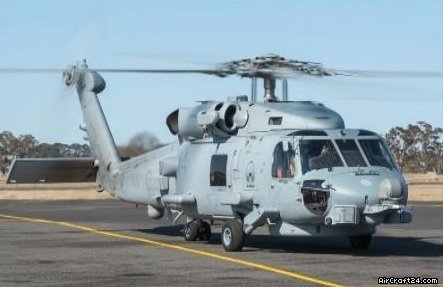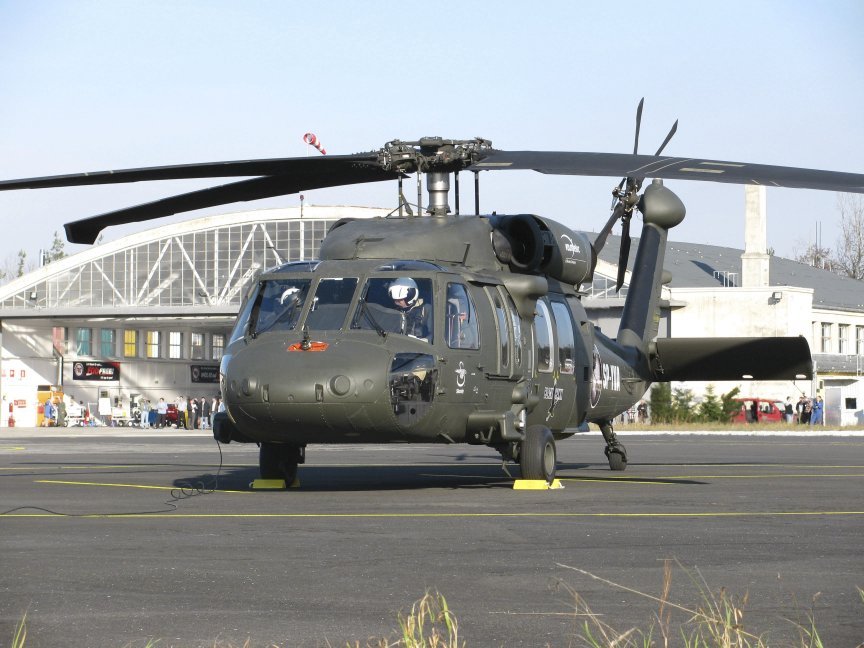How the Sikorsky S 70 Stands Out in the Helicopter Industry
How the Sikorsky S 70 Stands Out in the Helicopter Industry
Blog Article
High-Performance Multi-Role Rotorcraft Featuring Advanced Cockpit Technologies and Integrated Sensing Unit Systems
The realm of rotorcraft innovation has actually seen remarkable developments in recent times, specifically in the world of high-performance multi-role rotorcraft equipped with cutting-edge cockpit innovations and effortlessly incorporated sensor systems. These developments have not just boosted the functional abilities of rotorcraft however have actually likewise considerably impacted contemporary aviation operations on various fronts. From enhanced mission versatility to improved functional efficiency, the merging of sophisticated cockpit innovations and integrated sensing unit systems has ushered in a brand-new period of opportunities for rotorcraft applications. In the following conversation, we will explore the evolution of rotorcraft technology, look into the world of innovative cabin developments, and take a look at the ramifications of incorporated sensor systems on the operational versatility and effectiveness of modern rotorcraft.
Evolution of Rotorcraft Innovation
The evolution of rotorcraft technology has actually been noted by considerable innovations in aerodynamics, products, and propulsion systems, forming the capabilities and performance of modern-day rotorcraft. Aerodynamic enhancements have actually boosted the effectiveness and ability to move of rotorcraft, permitting increased speed, dexterity, and stability during flight (sikorsky s 70). Technologies in materials, such as making use of composite materials and advanced alloys, have actually resulted in lighter yet more powerful rotorcraft frameworks, enhancing overall performance and resilience. Furthermore, developments in propulsion systems, consisting of more powerful engines and innovative propulsion technologies, have enabled rotorcraft to achieve higher elevations, faster speeds, and better hauls.
These developments have not only transformed the capacities of rotorcraft however have actually likewise broadened their applications across different industries, consisting of military, industrial, and emergency services. The continuous evolution of rotorcraft modern technology continues to drive innovation in the area, pressing the boundaries of what is possible and forming the future of vertical trip.
Advanced Cockpit Innovations
Building upon the fundamental innovations in the rules of aerodynamics, materials, and propulsion systems, the realm of rotorcraft technology currently changes focus towards introducing Advanced Cabin Innovations. The assimilation of sophisticated innovations within the cabin environment plays a vital role in enhancing the operational capabilities, safety and security, and effectiveness of modern rotorcraft. sikorsky s 70. Advanced Cabin Innovations include a large range of features made to supply pilots with enhanced situational recognition, structured data monitoring, and user-friendly control user interfaces
Among the vital developments in cabin layout is the implementation of glass cockpits, which change traditional analog evaluates with high-resolution screens. These electronic systems supply personalized layouts, real-time data integration, and improved readability, making it possible for pilots to access critical details at a look. Advanced avionics systems, such as fly-by-wire controls and boosted fact displays, are reinventing just how pilots connect with the airplane, enabling for accurate control and boosted decision-making capabilities.


Including sophisticated cockpit developments not only enhances pilot performance but additionally contributes to overall goal performance and security in intricate operational settings. By leveraging modern technologies within the cockpit, rotorcraft suppliers are setting brand-new requirements for operational excellence and mission success.
Integrated Sensing Unit Systems
With the evolution of rotorcraft technology, the combination of sophisticated Integrated Sensor Systems has come to be critical in enhancing operational performance and safety. These Integrated Sensor Equipments include click here for more info a vast range of modern technologies that offer important data for numerous features such as navigation, surveillance, targeting, and ecological tracking. By perfectly incorporating sensors like radars, electronic cameras, lidar, and infrared systems right into rotorcraft, drivers can profit from enhanced situational awareness, boosted objective capacities, and reduced pilot workload.
One key advantage of Integrated Sensor Solutions is their ability to collect real-time data and offer actionable understandings to pilots and goal operators. For instance, advanced radar systems can detect and track targets over fars away, enabling for very early hazard detection and reliable reaction preparation. Furthermore, integrating electro-optical and infrared cams enables rotorcraft to perform reconnaissance and monitoring objectives with precision and precision.
Essentially, the integration of cutting-edge sensor technologies right into rotorcraft not only boosts operational efficiency however also adds considerably to total objective success and staff safety and security. As rotorcraft continue to advance, the function of Integrated Sensor Equipment will undoubtedly remain at the center of advancement in the aerospace market.
Functional Versatility and Effectiveness
Enhancing functional convenience and efficiency in rotorcraft is a natural progression from the integration of innovative Integrated Sensor Equipments. By leveraging the data and insights given by these innovative sensor systems, rotorcraft can optimize their performance throughout different missions and atmospheres.
Operational convenience encompasses the capacity of rotorcraft to adjust to different functions and situations efficiently. With advanced cockpit innovations and incorporated sensor systems, rotorcraft can flawlessly shift between jobs such as search and rescue, medical discharge, monitoring, and extra. This flexibility improves the rotorcraft's ability to meet varied functional needs without requiring considerable reconfiguration.
Effectiveness in rotorcraft procedures is essential for optimizing goal efficiency and source usage. Integrated sensor systems play an essential role in enhancing functional efficiency by offering real-time data on weather, surface mapping, target monitoring, and more. This information allows pilots to make educated choices swiftly, enhance flight this link paths, conserve gas, and improve general goal productivity.
Effect on Modern Aeronautics Procedures

Furthermore, the combination of advanced sensing units assists in enhanced mission preparation and implementation, allowing rotorcraft to do a wide variety of tasks with improved precision. From search and rescue procedures to airborne firefighting and police missions, the abilities of contemporary rotorcraft furnished with innovative cockpit modern technologies and integrated sensing unit systems are unequaled.
Moreover, the influence of these advancements expands beyond functional effectiveness to cost-effectiveness and sustainability. By enhancing trip routes, fuel consumption, and upkeep schedules, high-performance rotorcraft outfitted with advanced cockpit modern technologies and sensors contribute to decreasing operational costs and environmental influence, making them important possessions in modern air travel procedures.
Final Thought
In verdict, the high-performance multi-role rotorcraft with innovative cockpit technologies and integrated sensing unit systems stands for a substantial evolution in air travel modern technology. These advancements boost operational adaptability and efficiency, eventually affecting modern-day aeronautics operations in a favorable method. The integration of these advanced technologies enables enhanced abilities and efficiency in numerous mission scenarios, showcasing the proceeded improvement of rotorcraft technology in the aviation sector.
The world of rotorcraft modern technology has actually seen notable improvements in current times, especially in the realm of high-performance multi-role rotorcraft geared up with innovative cockpit technologies and perfectly integrated sensor systems. From enhanced objective convenience to improved functional effectiveness, the merging of advanced cockpit technologies and incorporated sensing unit systems has ushered in a new period of possibilities for rotorcraft applications. In the following discussion, we will certainly discover the advancement of rotorcraft technology, delve right into the realm of sophisticated cabin innovations, and analyze the implications of integrated sensing unit systems on the functional adaptability and performance of modern-day rotorcraft.
 original site alt="sikorsky s 70
original site alt="sikorsky s 70"/>
Report this page